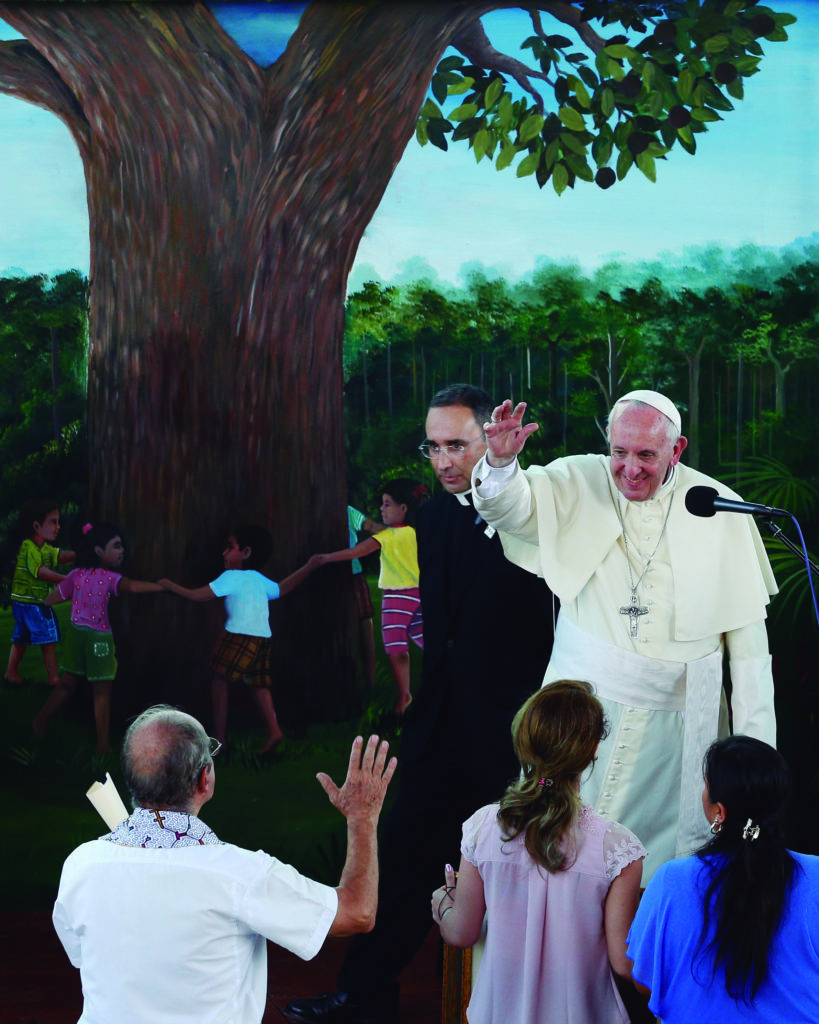Exactly two years ago, during the Angelus on Sunday, October 15, Pope Francis publicly announced the celebration of the Special Assembly of Bishops for the Pan-Amazon Region, which is finally getting underway in these days. He motivated his decision by emphasizing the portion of the People of God that inhabits these lands, "especially the indigenous people, often forgotten and without the prospect of a serene future."The Amazon rainforest is also threatened by the intensive exploitation of the Amazon rainforest, "lung of capital importance for our planet"..
The need to identify "new paths" for evangelization and attention to creation were inherent to this announcement, as was later seen in the theme that guided the work of the Synod.
It is striking to note how his predecessor Pius X wrote as early as 1912 the Encyclical Letter Lacrimabili Statu in favor of "the Indians of South America", in turn taking up the concern of Benedict XIV who in 1741 (Immensa pastorum) condemned slavery. Pius X highlighted "the tortures and crimes that are now being committed against them." feeling horror and "deep sorrow for that unhappy race", victim of the excesses of vice and evil. The solution proposed by the Church at that time was "to extend, in these vast regions, the field of apostolic action." establishing new missionary bases.
We can see in these expressions of the Magisterium a historical continuity that reaches our days, and that leads us to consider the Amazon not as something distant and sometimes indecipherable, but as the "center" from which to begin an ecclesial dynamism that is both a spiritual engine for the West and a safeguard for the health of its vital environment.
The Amazon has always been present in the heart of the Holy Father Francis, both in terms of its origin in Latin America, as well as the close link with the Aparecida Conference in Brazil, which the Pope coordinated and gave great impetus to the evangelization of those lands. And that today returns as a trace of the journey that the whole Church must undertake.
He had said so himself on his first apostolic trip to Rio de Janeiro for World Youth Day in July 2013. When he met with the bishops of those lands, he explained how Aparecida and Amazonia are united by their strong call to respect and safeguard creation. And he recalled the need for qualified formators, a native clergy, in order to consolidate the "Amazonian face". of the Church.
Today those words sound prophetic, or at least as keys to begin the journey that the Church has undertaken in recent months and is now consolidating within a structure, -the Synod-, of reflection, exchange, discernment to provide the Church with the ability to bring the Gospel even to impassable and difficult to reach places.
Certainly, the reflection that the Church is making in these times cannot be separated from another enormously important papal document, the encyclical Laudato si', Pope Francis wrote in 2015, which highlights how everything in the world is fundamentally connected and "we cannot fail to consider the effects of environmental degradation, the current development model and the throwaway culture on people's lives."
The most characteristic element of all this reflection was undoubtedly the meeting that the Pontiff had with the peoples of the Amazon in Puerto Maldonado, in January of last year during his trip to Chile and Peru. There, Francis praised the Lord "for this marvelous work of your Amazonian peoples and for all the biodiversity that these lands envelop", without forgetting, however, to denounce the deep wounds inflicted from the outside and suffered by all.
The Pope's final confidence was the "resilience of peoples and their capacity to react to the difficult times in which they live".as has been demonstrated throughout history. The need today is to build "a Church with an Amazonian face and a Church with an indigenous face"..








